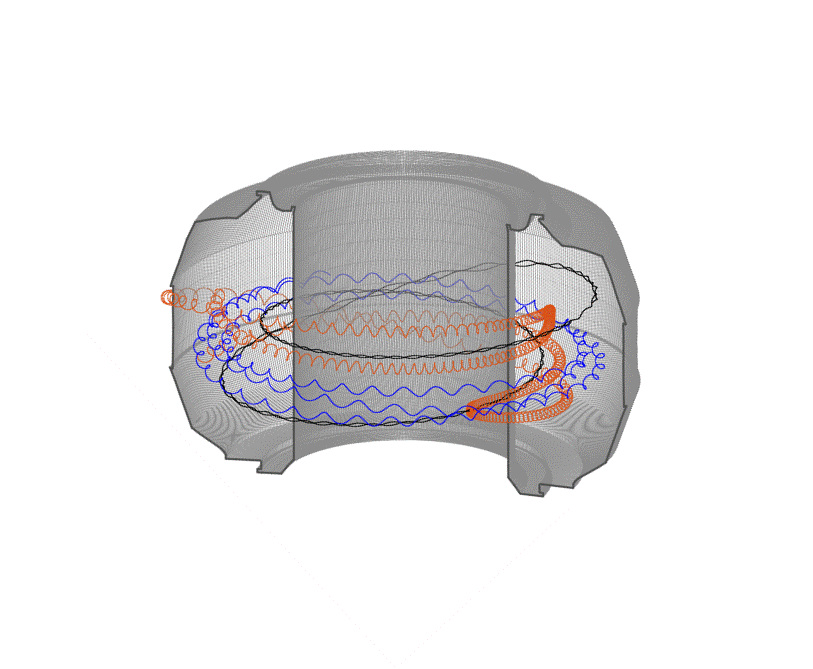
Filter News
Area of Research
- Advanced Manufacturing (3)
- Biological Systems (1)
- Biology and Environment (23)
- Clean Energy (25)
- Climate and Environmental Systems (1)
- Computational Engineering (1)
- Computer Science (3)
- Fusion and Fission (10)
- Fusion Energy (9)
- Materials (15)
- National Security (5)
- Neutron Science (5)
- Nuclear Science and Technology (3)
- Supercomputing (13)
News Type
News Topics
- (-) Bioenergy (39)
- (-) Fusion (26)
- (-) Machine Learning (25)
- (-) Mercury (5)
- 3-D Printing/Advanced Manufacturing (76)
- Advanced Reactors (24)
- Artificial Intelligence (48)
- Big Data (24)
- Biology (40)
- Biomedical (28)
- Biotechnology (11)
- Buildings (35)
- Chemical Sciences (43)
- Clean Water (15)
- Climate Change (46)
- Composites (20)
- Computer Science (101)
- Coronavirus (28)
- Critical Materials (23)
- Cybersecurity (20)
- Decarbonization (31)
- Education (3)
- Element Discovery (1)
- Energy Storage (74)
- Environment (81)
- Exascale Computing (11)
- Fossil Energy (2)
- Frontier (16)
- Grid (37)
- High-Performance Computing (41)
- Hydropower (6)
- Irradiation (2)
- Isotopes (23)
- ITER (5)
- Materials (94)
- Materials Science (87)
- Mathematics (2)
- Microelectronics (1)
- Microscopy (27)
- Molten Salt (8)
- Nanotechnology (38)
- National Security (21)
- Net Zero (5)
- Neutron Science (78)
- Nuclear Energy (46)
- Partnerships (30)
- Physics (28)
- Polymers (21)
- Quantum Computing (14)
- Quantum Science (37)
- Renewable Energy (1)
- Security (13)
- Simulation (16)
- Space Exploration (13)
- Statistics (2)
- Summit (27)
- Sustainable Energy (75)
- Transformational Challenge Reactor (4)
- Transportation (61)
Media Contacts

Researchers at Oak Ridge National Laboratory are taking inspiration from neural networks to create computers that mimic the human brain—a quickly growing field known as neuromorphic computing.

A study led by Oak Ridge National Laboratory explored the interface between the Department of Veterans Affairs’ healthcare data system and the data itself to detect the likelihood of errors and designed an auto-surveillance tool

OAK RIDGE, Tenn., March 1, 2019—ReactWell, LLC, has licensed a novel waste-to-fuel technology from the Department of Energy’s Oak Ridge National Laboratory to improve energy conversion methods for cleaner, more efficient oil and gas, chemical and

Scientists have tested a novel heat-shielding graphite foam, originally created at Oak Ridge National Laboratory, at Germany’s Wendelstein 7-X stellarator with promising results for use in plasma-facing components of fusion reactors.

Scientists at the Department of Energy’s Oak Ridge National Laboratory have created a recipe for a renewable 3D printing feedstock that could spur a profitable new use for an intractable biorefinery byproduct: lignin.
Scientists studying a valuable, but vulnerable, species of poplar have identified the genetic mechanism responsible for the species’ inability to resist a pervasive and deadly disease. Their finding, published in the Proceedings of the National Academy of Sciences, could lead to more successful hybrid poplar varieties for increased biofuels and forestry production and protect native trees against infection.

Biologists from Oak Ridge National Laboratory and the Smithsonian Environmental Research Center have confirmed that microorganisms called methanogens can transform mercury into the neurotoxin methylmercury with varying efficiency across species.

Fusion scientists from Oak Ridge National Laboratory are studying the behavior of high-energy electrons when the plasma that generates nuclear fusion energy suddenly cools during a magnetic disruption. Fusion energy is created when hydrogen isotopes are heated to millions of degrees...

The Department of Energy has announced funding for new research centers to accelerate the development of specialty plants and processes for a new generation of biofuels and bioproducts. The Center for Bioenergy Innovation (CBI), led by Oak Ridge National Laboratory...

A team led by the Department of Energy’s Oak Ridge National Laboratory has identified a novel microbial process that can break down toxic methylmercury in the environment, a fundamental scientific discovery that could potentially reduce mercury toxicity levels and sup...


